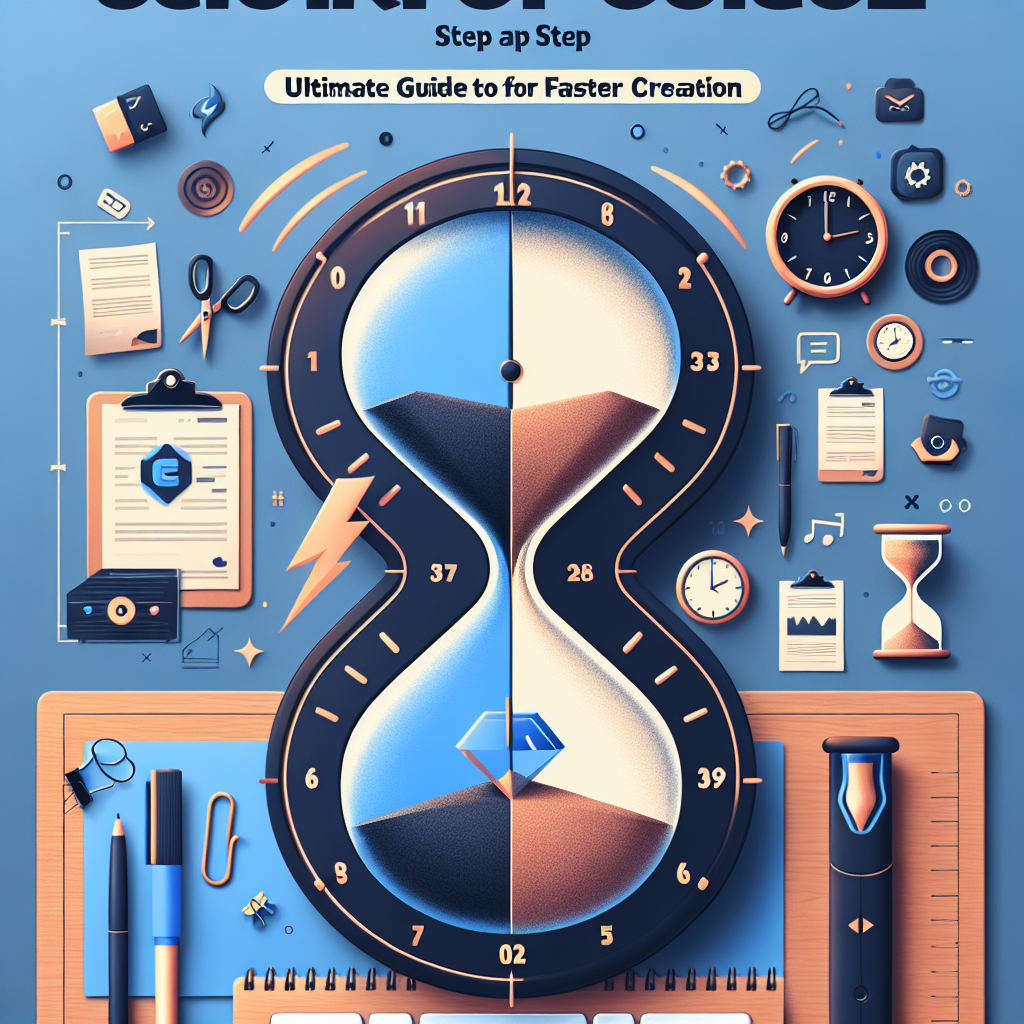Speed Up Editing Workflow Step by Step: The Ultimate Guide
Discover proven strategies to accelerate your editing workflow, boost productivity, and deliver high-quality content efficiently. This comprehensive step-by-step guide is packed with expert tips, actionable steps, and practical advice tailored for writers, video editors, designers, and content creators.
Introduction: Why Streamlining Your Editing Workflow Matters
Editing is a crucial phase in content creation—whether you’re refining a blog post, editing a video, or polishing a graphic design. A slow, disorganized workflow can lead to missed deadlines, burnout, and compromised quality. In today’s fast-paced digital landscape, mastering the art of speeding up your editing workflow step by step is essential for staying competitive and maintaining consistency.
In this guide, we’ll break down the key steps and industry best practices to help you optimize your editing process, save time, and achieve outstanding results without sacrificing quality.
Step 1: Prepare & Organize Your Assets
Efficient editing begins with solid preparation. Start by gathering and organizing all your raw materials—drafts, footage, images, audio, and reference documents—into clearly labeled folders. This systematic asset management minimizes distractions and prevents time-consuming searches later on.
- Create a folder structure: Separate assets by type (e.g., images, scripts, audio).
- Rename files descriptively: Use clear, consistent naming conventions for quick identification.
- Back up your data: Use cloud storage or external drives to prevent data loss.
Step 2: Customize Your Editing Environment
Your editing software can be a powerful ally or a bottleneck. Optimize your workspace for speed:
- Set up keyboard shortcuts: Assign custom hotkeys for frequent actions (cut, copy, paste, undo).
- Arrange panels and tools: Position your most-used tools within easy reach for seamless navigation.
- Utilize templates and presets: Pre-built templates and settings reduce repetitive tasks.
“An efficient workspace can save you hours each week by eliminating unnecessary clicks and menu dives.”
Step 3: Develop a Repeatable Editing Checklist
Consistency is key. A step-by-step checklist helps you maintain quality while working quickly. Customize your list to your workflow, but ensure it covers essential tasks:
- Initial review and rough edits
- Grammar, spelling, and style adjustments
- Content structure and flow optimization
- Final polish and export
Using a checklist reduces the risk of missing important details and streamlines your process from start to finish.
Step 4: Leverage Automation Tools and Plugins
Modern editing tools offer a wide range of automation features and plugins that can speed up repetitive tasks:
- Auto-correct and grammar tools: Quickly fix errors in text content.
- Batch processing: Apply edits to multiple files simultaneously in video or photo editing.
- Macros and scripts: Automate complex, multi-step tasks with a single click.
Explore your software’s marketplace or extension library for high-rated plugins tailored to your needs.
Step 5: Master Efficient Reviewing Techniques
Reviewing is often the most time-consuming part of the editing process. Speed it up with these strategies:
- Work in focused sprints: Set a timer for 25–30 minutes and tackle edits in blocks.
- Use version control: Track changes and revert mistakes easily.
- Collaborate with feedback tools: Enable real-time comments and suggestions from team members.
Step 6: Optimize Export and Delivery
Finalize your project with efficient export settings:
- Choose the right file format and resolution for your platform.
- Utilize export presets for recurring output needs.
- Double-check for errors before publishing or delivering the content.
Automate delivery by integrating with cloud services or scheduling tools when possible.
Bonus Tips: Continuous Improvement & Time Management
To truly accelerate your editing workflow, embrace regular self-evaluation. Track your time on each step, identify bottlenecks, and look for new tools or shortcuts. Stay updated with the latest software features and community best practices.
- Set clear goals for each editing session.
- Take regular breaks to maintain focus and prevent fatigue.
- Join online communities to exchange tips and discover new workflow hacks.
Conclusion: Transform Your Editing Workflow Today
Speeding up your editing workflow step by step is not about rushing or sacrificing quality—it’s about working smarter. By organizing assets, customizing your environment, using automation, and adopting efficient reviewing techniques, you can consistently deliver polished content on time. Start implementing these strategies now and watch your productivity soar!
Remember, every minute saved in the editing process is a minute you can reinvest in creativity, learning, or growing your business.
